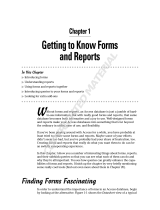
cobas® infinity
Roche Diagnostics
14 User Manual · Version 2.0
Barcodes and labels
WARNING
Use of barcodes on the tubes
r In order to help locate the tubes, it is highly advisable to always use primary and
secondary tubes with barcodes whenever possible. If no barcode labels are used, take
special care not to misplace tubes when samples are put in the racks.
r It is strongly recommended to have appropriate Standard Operating Procedures (SOP)
to avoid an incorrect handling of tubes.
r It is recommended to use barcode labels to archive trays.
Configurations and users
WARNING
User training
r All users must receive adequate training on the application according to the use they
make of it. The fact that untrained users work with the software can lead to misuse of
the application and unwanted consequences, such as misinterpretation of results, data
loss, mixed data, or violation of confidentiality, among others.
WARNING
Restricting access to critical functions
r It is also advisable to restrict access to critical system functions (for example,
configuration screens) only to qualified users. If only qualified users work with the
application, the risk of issues related to the configuration of the system is dramatically
reduced.
WARNING
Access to the application and user accounts
r Access to the application should only be granted to users who have been trained and
assigned a user name and password. The password must be confidential and must
comply with the usual security principles. It must be changed periodically to prevent
unauthorized parties from gaining access.
r It is recommended that you develop SOP to ensure that only qualified personnel access
the application.
r One account per user: do not create generic user accounts to be used by more than
one person. Create a different account for each user, even if they have the same
access rights.
WARNING
Passwords, access, and system shutdown
r Only authorized personnel should install this software. Personnel must ensure they do
not disclose internal Roche passwords to unauthorized parties.
r Access to application files and folders on any computer should also be restricted to
authorized personnel only.
r For security reasons and for patient confidentiality, all users must exit the application or
lock their computer before leaving their workplace.
WARNING
Standard operating procedures
r In addition to the safety parameters included in the software and the training provided
to system users, it is recommended that the laboratory staff develops SOP that describe
how to manage any potential problems during the validation process or if the
instrument malfunctions while tests are being processed or data is being sent.






















